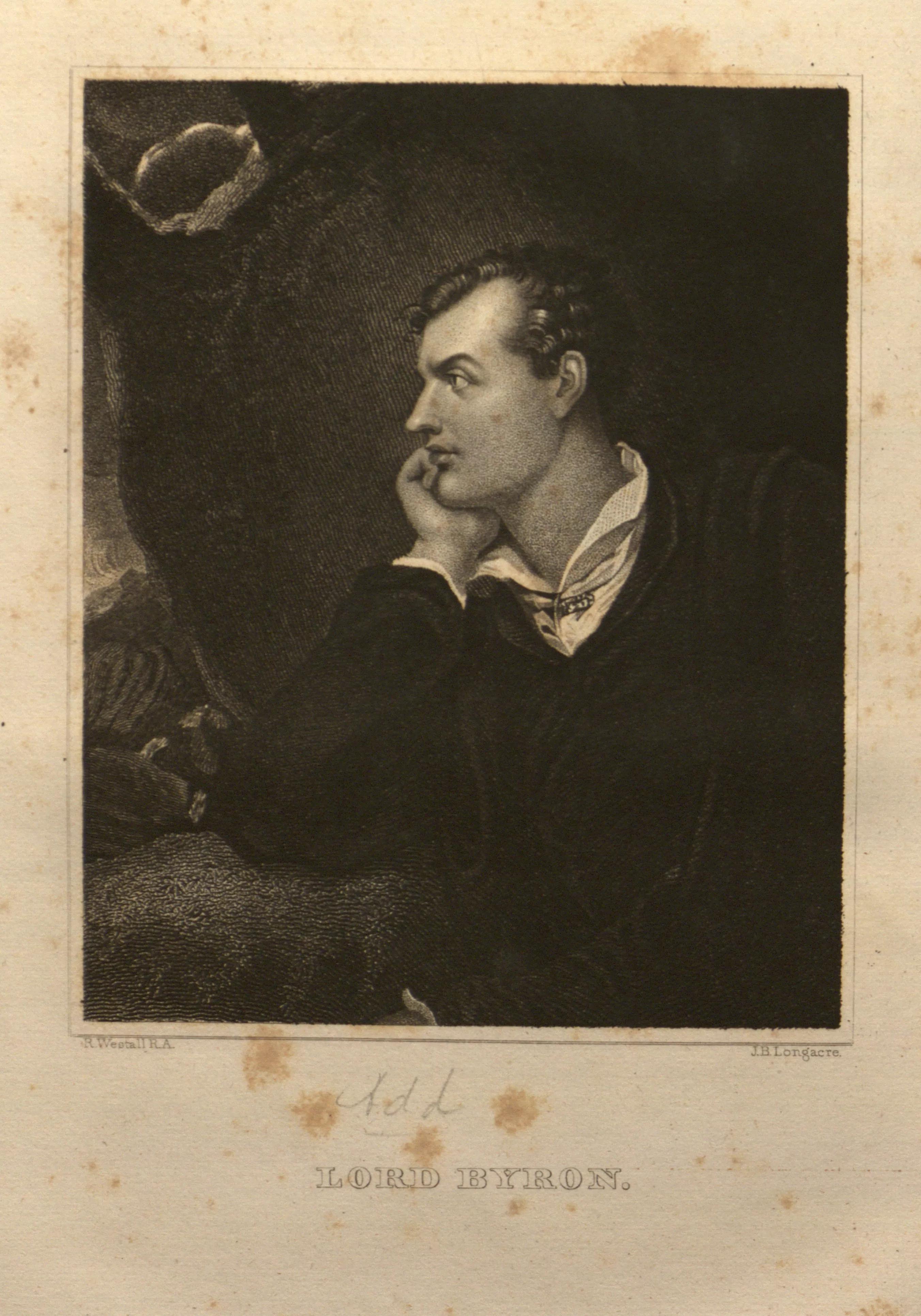Creation Date
1841
Height
11 cm
Width
9 cm
Medium
Genre
Description
This print portrays Lord Byron as the quintessential Romantic poet, as well as the Byronic hero formulated and featured in his own works.
This print portrays Lord Byron as the quintessential Romantic poet. He sits in three-quarter view, his face turned in profile to the left and resting on his right hand in the archetypal thinking pose. His short curly hair is slightly ruffled, and he wears an elegant shirt that is slightly open at the neck, a rumpled coat, and a cape draped over his left shoulder. A clasp or pin at his collar is his sole ornament. Byron appears to be sitting in a cave that opens onto a sublime landscape, dimly seen, of mountains, rugged terrain, moonlight, and clouds.
This reproduction engraving of Lord Byron attempts to represent the Romantic poet’s inner creative genius through external visual form and to depict Lord Byron as a Byronic hero. A number of devices are used to accomplish these aims. Byron is shown in an archetypal thinking pose, demonstrating that the poet’s labor is intellectual. His brooding stare, depicted in his wide-open eyes and hunched eyebrows, further suggests that the poet’s products are created from his inner vision. Byron’s attire—his elegant yet casually ruffled clothing and hairstyle—alludes to the Byronic hero’s disdain for authority and social convention. Finally, the presence of a sublime landscape in the background, with its vast mountains, obscuring clouds, and moonlight, signifies the vast greatness not only of nature but also of Byron’s intellectual and artistic genius. This engraving, printed in the United States sixteen years after Byron’s death, demonstrates the continued significance of the Byronic type into the Victorian period and the wider English-speaking world. The image’s conflation of the historical Lord Byron, the fictional Byronic hero, and the professional Romantic poet points to the slippage that artistic types generated between art and life, fiction and reality.
Publisher
Grigg & Elliot
Collection
Accession Number
CA 13975
Additional Information
Bibliography
Barker-Benfield, G.J. The Culture of Sensibility: Sex and Society in Eighteenth-Century Britain. Chicago: U of Chicago P, 1992. Print.
Burke, Edmund. A Philosophical Enquiry into the Origin of our Ideas of the Sublime and Beautiful. Ed. James T. Boulton. Notre Dame: U of Notre Dame P, 1968. Print.
Campbell, Colin. The Romantic Ethic and the Spirit of Modern Consumerism. Oxford: Blackwell, 1987. Print.
Garber, Marjorie. Bisexuality and the Eroticism of Everyday Life. New York: Routledge, 2000. Print.
Haggerty, George E. “Psychodrama: Hypertheatricality and Sexual Excess on the Gothic Stage.” Theatre Research International 28.1 (2003): 20-33. Print.
Kriz, Kay Dian. The Idea of the English Landscape Painter: Genius as Alibi in the Early Nineteenth Century. New Haven: Yale UP, 1997. Print.
McDayter, Ghislaine. Byromania and the Birth of Celebrity Culture. New York: State U of New York P, 2009. Print.
Rovee, Christopher. Imagining the Gallery: The Social Body of British Romanticism. Stanford: Stanford UP, 2006. Print.
Wilson, Frances. Byromania: Portraits of the Artist in Nineteenth- and Twentieth-century Culture. New York: Palgrave Macmillan, 1999. Print.

